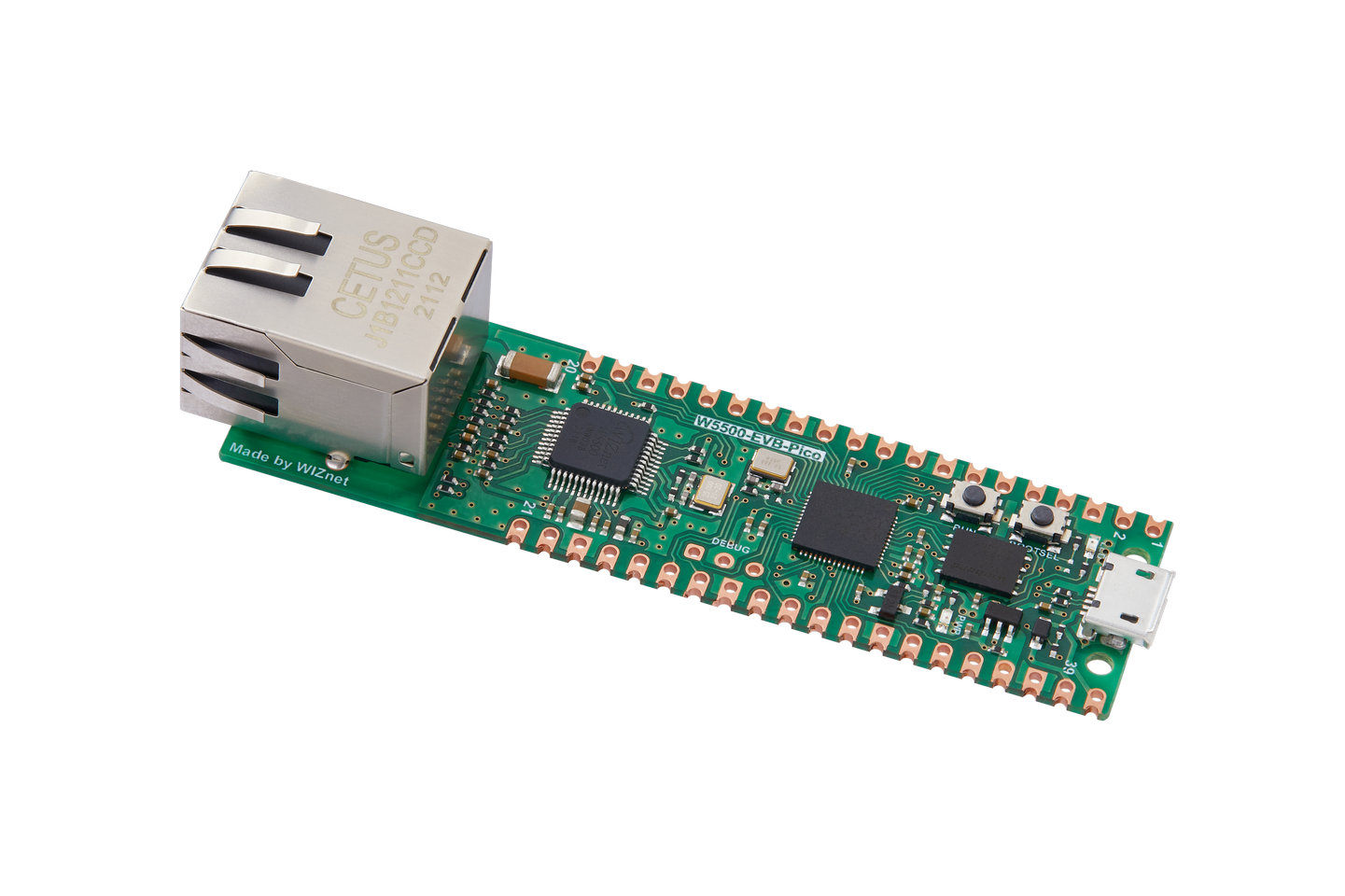Infrared temperature sensor with W55RP20-EVB-PICO
This project is to aimed to develop Infrared temperature sensor with W55RP20-EVB-PICO

An infrared temperature sensor is a non-contact device that detects the temperature of an object or surface by measuring the infrared radiation emitted by it, and is widely used in applications such as industrial process monitoring, medical diagnostics (e.g., thermometers and thermal imaging), HVAC systems, automotive temperature monitoring, and environmental sensing for detecting heat signatures in both living organisms and machinery.
The MLX90614 is a highly accurate, non-contact infrared temperature sensor that measures both ambient and object temperatures by detecting infrared radiation, and is commonly used in applications like body temperature measurement, industrial process control, home automation, and medical devices due to its wide temperature range, built-in signal processing, and easy integration with microcontrollers via I2C or PWM interfaces.
The MLX90614 infrared temperature sensor can be seamlessly integrated with the W55RP20-EVB-PICO , allowing for non-contact temperature measurement of both ambient and object surfaces, with data communicated via I2C, making it ideal for applications like remote temperature monitoring, home automation, and IoT projects that require precise thermal sensing.
In the two images I have shared, we can see that the first image shows a hardware consisting of a sensor connected to a breadboard, which is likely connected to a microcontroller. This microcontroller is then connected to a laptop via a cable, likely using a serial communication protocol. In the first image, the sensor used is seen connected to the breadboard circuit with some jumper cables, and the testing or programming process is being carried out via the laptop which serves as the main interface. The second image is a screenshot from the serial monitor showing the ambient temperature readings and the object temperature. These readings indicate that the sensor is most likely an infrared temperature sensor or thermopile which is capable of measuring temperature remotely. This sensor displays two types of temperatures in real-time: the ambient temperature and the temperature of the object being measured. From the data displayed, it can be seen that the ambient temperature ranges from 33.57°C to 33.77°C, which indicates the ambient conditions where the sensor is operating, while the temperature of the object being measured by the sensor ranges from 39°C to 40°C. This difference indicates that the object being measured has a higher temperature than the ambient temperature. Overall, these images depict temperature testing or monitoring being done with the help of sensors and microcontrollers, which are then displayed in real-time via a serial monitor on a laptop. This could be part of an electronics project or IoT (Internet of Things) development that requires temperature measurement for various purposes, such as environmental monitoring or temperature control.
This appears to be data from a temperature sensor, likely being monitored by a microcontroller and displayed on computer.
Two Temperature Readings: Each line shows two temperature measurements labeled "Ambient" and "Object." "Ambient" likely refers to the surrounding air temperature, while "Object" is probably the temperature of a specific item being monitored.
This photo shows a setup designed to monitor the temperature of something inside refrigerator. I am using a microcontroller, likely an Arduino or similar, connected to a breadboard and a temperature sensor (which is probably inside the fridge). The microcontroller is then connected to laptop, which is likely displaying and recording the temperature data. This suggests you're interested in tracking how the temperature changes over time, possibly for a science experiment, to monitor food safety, or even to optimize your refrigerator's performance.
Given the presence of meat in the refrigerator, you might be particularly interested in ensuring it stays at a safe temperature to prevent spoilage. By tracking the temperature with this setup, we can get real-time feedback and potentially identify any issues with your refrigerator's cooling system before your food is affected. This kind of DIY temperature monitoring can be a valuable tool for maintaining food safety and reducing waste.


